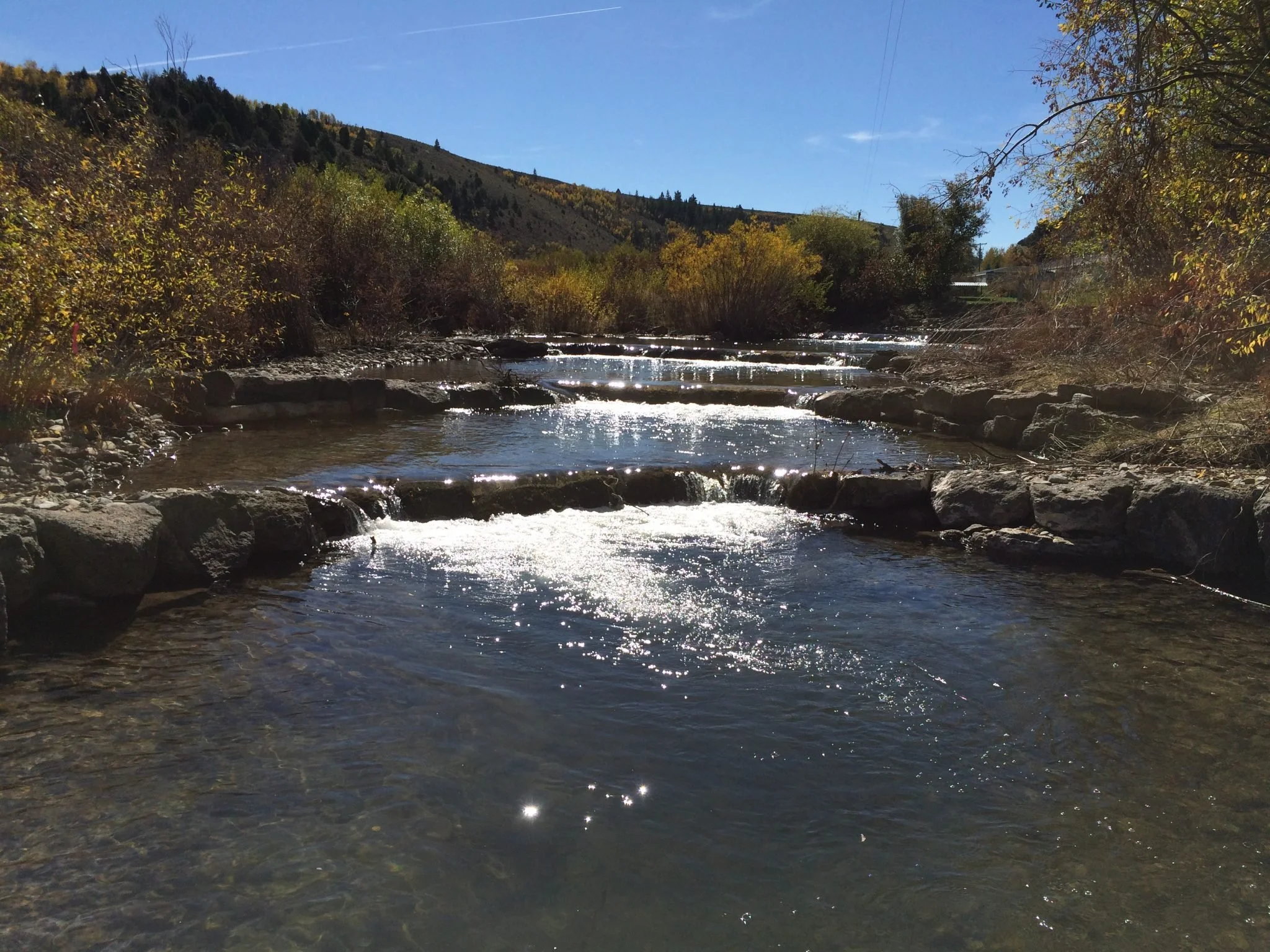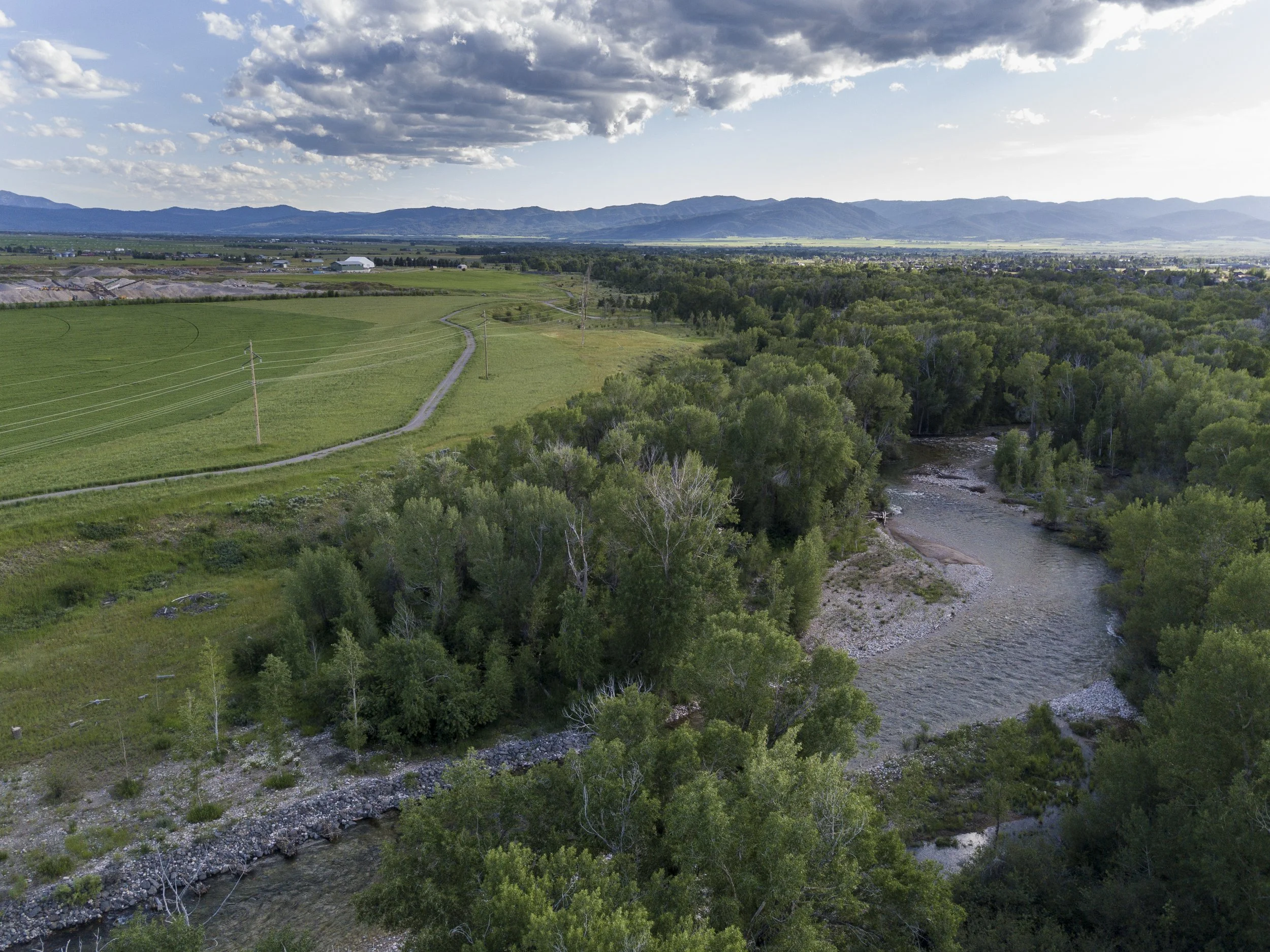Water and Flow Optimization
Canyon Creek Flow
Canyon Creek is a wild and remote tributary of the Teton River Canyon. Its headwaters and most of its 45 stream miles lie within the Caribou-Targhee National Forest. Among the tributaries in the Teton Watershed, Canyon Creek is a major focus for restoration efforts due to its valuable high-elevation habitat, importance as a Yellowstone Cutthroat Trout (YCT) spawning tributary, and historic productivity as a fishery. It is one of the few YCT strongholds in the entire Greater Yellowstone Ecosystem that still has an intact spawning run.
Canyon Creek is also home to collaborative work by local water users and Friends of the Teton River (FTR) for water resource management and stream restoration that benefits Yellowstone Cutthroat. For over a decade, FTR has been working with willing water users and landowners on Canyon Creek. Past projects to improve fish passage, connectivity, habitat, and stream function include building fish-friendly step-pools and structures at three points of diversion and stabilizing 1,400 feet of eroding stream banks. Currently, FTR is working with water users on a long-term flow restoration strategy that will be a win-win for farmers and fish. Working toward positive ecological outcomes while also maintaining a water supply to support agricultural needs is a tricky balance that requires communication, ingenuity, and trust among the people willing to try something different. This is what makes the effort on Canyon Creek a “once-in-a-century” opportunity.
Teton Water Users Association
Declines in the underground aquifer and water supply have a big impact on local livelihoods, fish, and wildlife in Teton Valley, Idaho. In response, an unlikely and effective partnership of local irrigators, agencies, scientists and conservation groups are finding solutions to change the way we work together and how water is managed to sustain the future of agriculture.
Incidental recharge occurs when water sinks into the aquifer as a result of human activities incidental to irrigation, such as when water sinks into the ground when farmers flood irrigate fields or when water is conveyed through unlined irrigation canals. It is a technique that can be used to improve, or recharge, the local aquifer. Once in the aquifer, this water travels slower than water on the surface. Slowing the water in this way delays its delivery into local streams by 1-3 months, depending on location.
The shallow aquifer serves as an underground reservoir that stores the abundant, cheap early-season water from snow runoff. Later in the season, the recharged aquifer can deliver more water during months when water is scarce and valuable. This can help meet irrigation and municipal water demand, support wetlands and streams, and boost the water table.
An idea to re-implement flood irrigation practices was brought forward by the irrigating community in Teton Valley, using incidental recharge techniques as a way to improve and recharge the local aquifer. Now, water users in Teton Valley are shifting their early-season watering practices to flood irrigation to store abundant snowmelt water in the aquifer for use later in the season. Then they’re switching to conservation irrigation practices like sprinklers to conserve water in the drier late summer months.
The program is designed to boost late season flows, make more water available for irrigators longer in the season, and contribute more water into the ecosystem. Learn more.
Teton Creek Corridor
Water can be seasonal in Teton Valley - with most of the region's precipitation falling in the form of snow, spring runoff can produce large amounts of water in the creeks and rivers.
Between 1980 and 2004, a significant portion of the Teton Creek Corridor was dramatically altered in an attempt to reduce flood risk for developing residences along the creek banks. These actions resulted in significant stream bank erosion and an estimated 90,000 tons of sediment to wash and be deposited downstream. Rather than reduce risk, the removal of acres of riparian vegetation and instream alteration on Teton Creek placed nearby homes and infrastructure at significant risk of damage or loss from floods.
Friends of the Teton River led the efforts to mitigate the pronounced threat of flooding through floodplain and channel restoration. More than $4 million dollars has been invested in stream and floodplain restoration on Teton Creek. FTR’s goal with this work is to re-establish Teton Creek as a dynamic, functioning stream channel that supports a robust fish, wildlife, and plant community. In doing so, the aim is to mitigate flood risk by protecting and restoring as much of the natural floodplain as possible.


